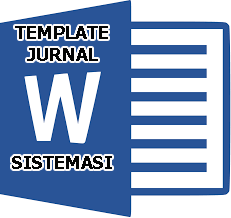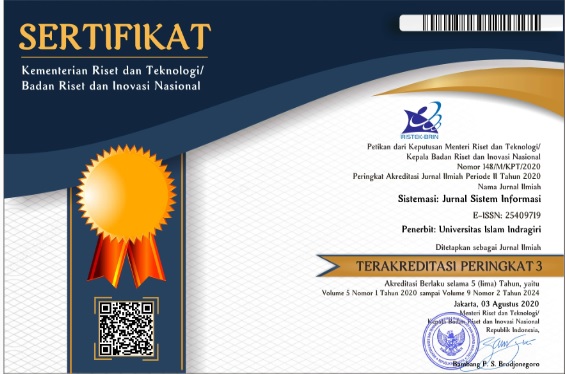Fake News Detection using the Random Forest Algorithm
Abstract
Keywords
Full Text:
PDFReferences
S. Sadiq, N. Wagner, M. L. Shyu, and D. Feaster, “High Dimensional Latent Space Variational AutoEncoders for Fake News Detection,” Proc. - 2nd Int. Conf. Multimed. Inf. Process. Retrieval, MIPR 2019, pp. 437–442, 2019, doi: 10.1109/MIPR.2019.00088.
trends.google.com, “Fake News Trend,” 2024. https://trends.google.com/trends/explore?date=2023-04-16 2024-03-16&geo=ID&q=Berita aktual,Berita palsu&hl=id
R. K. Kaliyar, A. Goswami, and P. Narang, “FakeBERT: Fake News Detection in Social Media with a BERT-based Deep Learning Approach,” Multimed. Tools Appl., vol. 80, no. 8, pp. 11765–11788, 2021, doi: 10.1007/s11042-020-10183-2.
E. Qawasmeh, M. Tawalbeh, and M. Abdullah, “Automatic Identification of Fake News using Deep Learning,” 2019 6th Int. Conf. Soc. Networks Anal. Manag. Secur. SNAMS 2019, pp. 383–388, 2019, doi: 10.1109/SNAMS.2019.8931873.
S. Lyu and D. C.-T. Lo, “Fake News Detection by Decision Tree,” IEEE SoutheastCon 2020, pp. 430–435, 2020, doi: 10.1109/SoutheastCon44009.2020.9249688.
R. Jehad and S. A.Yousif, “Fake News Classification using Random Forest and Decision Tree (J48),” Al-Nahrain J. Sci., vol. 23, no. 4, pp. 49–55, 2020, doi: 10.22401/anjs.23.4.09.
H. J. Alshahrani et al., “Hunter Prey Optimization with Hybrid Deep Learning for Fake News Detection on Arabic Corpus,” Comput. Mater. Contin., vol. 75, no. 2, pp. 4255–4272, 2023, doi: 10.32604/cmc.2023.034821.
S. Bachhety, R. Singhal, and R. Jain, “Intelligent Data Analysis with Data Mining: Theory and Applications,” Intell. Data Anal. From Data Gather. to Data Compr., vol. 1, pp. 63–83, 2020, doi: 10.1002/9781119544487.ch4.
P. Mukherjee, S. Santra, S. Bhowmick, A. Paul, P. Chatterjee, and A. Deyasi, “Development of GUI for Text-to-Speech Recognition using Natural Language Processing,” 2018 2nd Int. Conf. Electron. Mater. Eng. Nano-Technology, IEMENTech 2018, pp. 1–4, 2018, doi: 10.1109/IEMENTECH.2018.8465238.
S. K. A. Fahad and A. E. Yahya, “Inflectional Review of Deep Learning on Natural Language Processing,” 2018 Int. Conf. Smart Comput. Electron. Enterp. ICSCEE 2018, no. Dl, pp. 2018–2021, 2018, doi: 10.1109/ICSCEE.2018.8538416.
E. A. Lisangan, “Natural Language Processing dalam memperoleh Informasi Akademik Mahasiswa Universitas Atma Jaya Makassar,” J. Temat., vol. 1, no. March 2013, pp. 1–9, 2015, doi: 2303-3878.
A. Yousaf et al., “Emotion Recognition by Textual Tweets Classification using Voting Classifier (LR-SGD),” IEEE Access, vol. 9, pp. 6286–6295, 2021, doi: 10.1109/ACCESS.2020.3047831.
M. Tajrian, A. Rahman, M. A. Kabir, and M. R. Islam, “A Review of Methodologies for Fake News Analysis,” IEEE Access, vol. 11, no. June, pp. 73879–73893, 2023, doi: 10.1109/ACCESS.2023.3294989.
S. Mohan, C. Thirumalai, and G. Srivastava, “Effective Heart Disease Prediction using Hybrid Machine Learning Techniques,” IEEE Access, vol. 7, pp. 81542–81554, 2019, doi: 10.1109/ACCESS.2019.2923707.
K. Rajesh, A. Kumar, and R. Kadu, “Fraudulent News Detection using Machine Learning Approaches,” 2019 Glob. Conf. Adv. Technol. GCAT 2019, pp. 1–5, 2019, doi: 10.1109/GCAT47503.2019.8978436.
M. Al Bataineh, D. I. A. Abdoun, H. Alnuaimi, Z. Al-Qudah, Z. Albataineh, and M. Al Ahmad, “Head Impact Detection using Machine Learning Algorithms,” IEEE Access, vol. 12, no. January, pp. 4938–4947, 2024, doi: 10.1109/ACCESS.2023.3349212.
D. Rohera et al., “A Taxonomy of Fake News Classification Techniques: Survey and Implementation Aspects,” IEEE Access, vol. 10, pp. 30367–30394, 2022, doi: 10.1109/ACCESS.2022.3159651.
DOI: https://doi.org/10.32520/stmsi.v14i3.4995
Article Metrics
Abstract view : 728 timesPDF - 129 times
Refbacks
- There are currently no refbacks.

This work is licensed under a Creative Commons Attribution-ShareAlike 4.0 International License.









